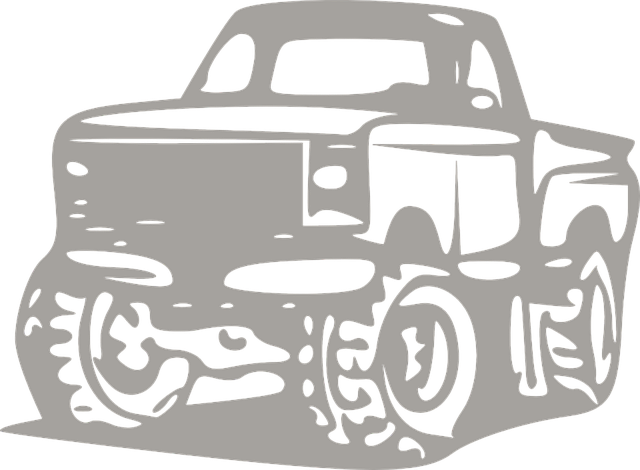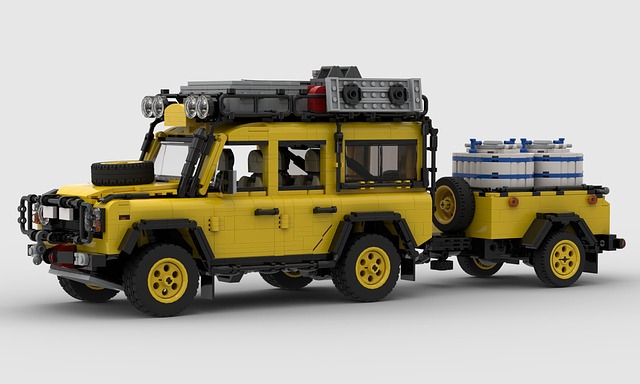Local 4×4 shops are essential hubs for off-roaders, offering a wide range of recovery lines tailored to diverse vehicle needs and conditions. From steel cables to synthetic webbing like Dyneema or Kevlar, these lines vary in strength, material, and length. Choosing the right line, with proper break strength and durable materials, is crucial for safe off-roading. Regular maintenance and timely replacement by local shops ensure optimal performance, preventing hazards and facilitating successful recoveries in challenging terrains.
Recovery lines are essential off-road accessories that enable vehicles to overcome challenging terrain. This article explores the various aspects of recovery lines, from understanding their basic functionality to their diverse applications and crucial factors in selection. Local 4×4 shops play a vital role in supplying these lines, offering tailored solutions for off-road enthusiasts. We’ll delve into different types, installation tips, maintenance requirements, and real-world success stories, empowering readers with the knowledge to enhance their off-roading experiences.
- Understanding Recovery Lines: A Basic Overview
- The Role of Local 4×4 Shops in Supplying Recovery Lines
- Different Types of Recovery Lines and Their Applications
- Factors to Consider When Choosing a Recovery Line
- Installation and Maintenance Tips for Optimal Performance
- Real-World Success Stories: How Recovery Lines Have Aided Off-Road Enthusiasts
Understanding Recovery Lines: A Basic Overview

Recovery lines are an essential component in the world of off-road vehicles, especially for those who rely on their cars for rugged terrain adventures or emergency situations. These lines, often overlooked, play a pivotal role in enabling safe and effective extraction when your vehicle finds itself stuck in challenging conditions. Understanding recovery lines starts with recognizing their purpose: to provide additional grip and support when conventional tires struggle.
Local 4×4 shops are a go-to resource for acquiring these specialized lines, offering a range of options tailored to different vehicles and driving conditions. From steel cables to synthetic webbing, each type presents unique advantages in terms of strength, flexibility, and resistance to environmental factors. Choosing the right recovery line depends on the specific needs of the driver and the nature of the terrain they frequently navigate.
The Role of Local 4×4 Shops in Supplying Recovery Lines

Local 4×4 shops play a pivotal role in supplying recovery lines, catering to the diverse needs of off-road enthusiasts and professionals alike. These specialized retailers offer a wide array of high-quality recovery equipment, ensuring that drivers are equipped with reliable tools when facing challenging terrains or unexpected vehicle breakdowns. With their expertise and extensive knowledge, local 4×4 shops provide tailored advice, assisting customers in selecting the most suitable recovery lines for their specific vehicles and recovery scenarios.
Moreover, these shops often stock a variety of recovery line types, including winches, tow ropes, and recovery slings, each designed to handle different weight capacities and situations. They also offer customization services, allowing owners to personalize their recovery gear to match their vehicle’s specifications and preferred recovery techniques. This level of local support is invaluable, especially during emergencies or remote adventures, as it guarantees quick access to essential recovery lines when every second counts.
Different Types of Recovery Lines and Their Applications

Recovery lines, also known as tow ropes or winch cables, come in various types, each designed for specific applications and conditions. For off-road enthusiasts and those who rely on local 4×4 shops for their vehicle needs, understanding these differences is vital. One common type is the standard steel cable, which offers excellent strength but may not be as flexible, making it suitable for general towing tasks.
Next, there are specialized recovery lines made from high-tenacity materials like Dyneema or Kevlar. These options provide exceptional strength-to-weight ratios and superior flexibility, ideal for challenging terrain and tight spaces. They are popular choices among off-roaders due to their ability to handle extreme conditions without compromising safety. Additionally, some recovery lines incorporate cam buckles or quick-release mechanisms, ensuring easy attachment and detachment during urgent situations.
Factors to Consider When Choosing a Recovery Line

When selecting a recovery line, several key factors should guide your decision. One crucial consideration is the line’s strength and capacity; ensure it can handle the weight of your vehicle and the specific recovery scenario. Check the break strength, which indicates the maximum force the line can withstand without failing.
Additionally, the material used in manufacturing plays a significant role. Synthetic lines, like polyester or Dyneema, offer excellent strength-to-weight ratios and are less susceptible to damage from UV exposure. Natural fibers, while more affordable, may degrade faster and require more maintenance. Consider also the line’s length; for local off-roading, shorter lines might be sufficient, but longer ones are beneficial for remote or challenging recovery situations where you need extended reach. Lastly, consult with local 4×4 shops to gain insights into the best options tailored to your region’s terrain and climate conditions.
Installation and Maintenance Tips for Optimal Performance

Ensure optimal performance from your recovery lines with proper installation and regular maintenance. Begin by consulting with experts at your trusted local 4×4 shops for guidance on selecting the right lines for your vehicle’s needs. The right fit is key; ill-fitting lines can lead to leaks, reduced efficiency, and potential safety hazards off-road.
Regular inspection is paramount. Check recovery lines for signs of wear, cracking, or damage after each use, especially in harsh environments. Keep an eye on line tension and ensure it’s within the manufacturer’s recommended range. Timely replacement of worn components by your local 4×4 shops can prevent catastrophic failure during a critical recovery situation.
Real-World Success Stories: How Recovery Lines Have Aided Off-Road Enthusiasts

Recovery lines have become a boon for off-road enthusiasts, offering them the peace of mind to tackle challenging terrains with increased safety and confidence. Numerous real-world success stories highlight their effectiveness in extricating vehicles from mud, sand, or rocky traps. These tales often originate from local 4×4 shops, where experienced mechanics and passionate off-roaders alike have relied on recovery lines to rescue their vehicles and those of their clients.
One such story involves a group of trail enthusiasts who encountered a severe storm while exploring a remote mountain range. Their vehicles became stuck in deep mud, with wheels spinning helplessly. Thanks to the quick thinking of one member who had packed a recovery line, they were able to connect and pull their cars out of the muck, allowing them to return safely to civilization. Similar stories abound, showcasing how these versatile tools have become indispensable for off-road adventurers and local 4×4 shops alike, ensuring that no vehicle or enthusiast is left stranded.
Recovery lines are an essential accessory for off-road enthusiasts, offering a reliable safety net during challenging terrain. As discussed in this article, understanding the various types and their applications is key. Local 4×4 shops play a vital role in supplying these critical components, ensuring that adventurers are equipped with the best tools for their adventures. When choosing a recovery line, consider factors like material strength, weight, and compatibility with your vehicle. Proper installation and regular maintenance will ensure optimal performance, as evidenced by numerous real-world success stories of off-road enthusiasts who have successfully navigated tough trails thanks to these versatile lines.



